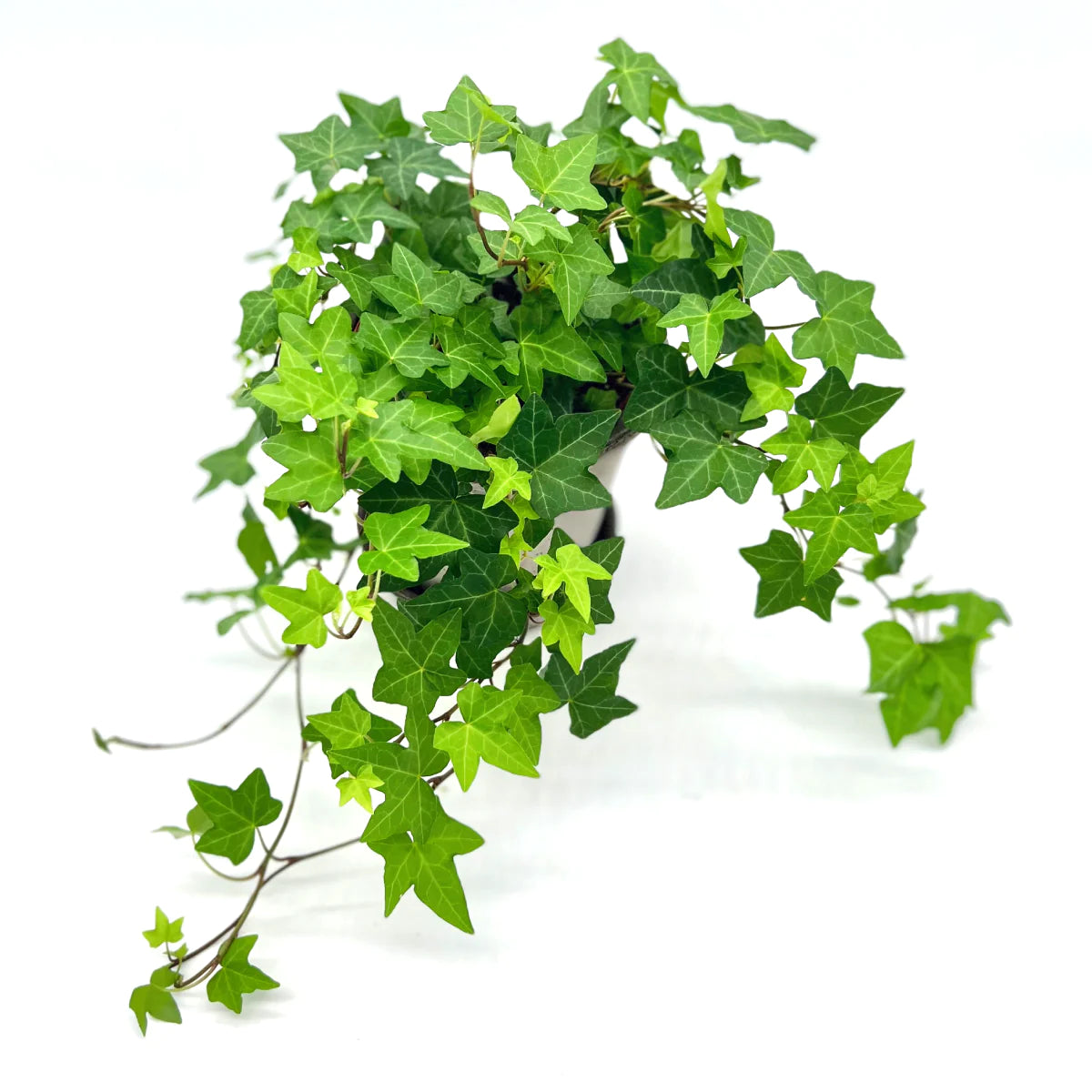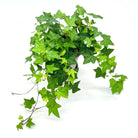Hedera Helix 'English Ivy'
Dhs. 85.00
Unit price
/
Unavailable
Couldn't load pickup availability
English ivy (Hedera helix) is a versatile and hardy plant, but it does need some specific care to thrive. Here are some tips to help you take care of your English ivy:
Light
- Indoor: English ivy prefers bright, indirect light. It can tolerate lower light conditions but may become leggy and less dense.
- Outdoor: If growing outside, it thrives in partial to full shade. Too much direct sunlight can scorch the leaves.
Watering
- Indoor: Keep the soil consistently moist but not waterlogged. Allow the top inch of soil to dry out between waterings. Reduce watering in the winter when the plant's growth slows down.
Soil
- Indoor: Use a well-draining potting mix. A general-purpose mix with added perlite or sand works well.
- Outdoor: English ivy adapts to a variety of soil types but prefers well-drained, rich soil. It can also tolerate poorer soils.
Temperature and Humidity
- Indoor: Ideal temperatures range from 60-75°F (15-24°C). . English ivy enjoys higher humidity but can tolerate average indoor levels.
Fertilization
- Indoor: Feed with a balanced, water-soluble fertilizer every 4-6 weeks during the growing season (spring and summer). Reduce feeding in fall and winter.
- Outdoor: Fertilize once or twice a year with a general-purpose fertilizer or compost.
Pruning
- Regularly trim English ivy to encourage a bushier appearance and control its growth. It can be quite vigorous and may need frequent pruning to keep it in check.
Pests and Problems
- Watch out for common pests like spider mites, aphids, and mealybugs. Treat infestations with insecticidal soap or neem oil.
- Overwatering can lead to root rot. Ensure proper drainage and avoid letting the plant sit in soggy soil.
Repotting
- Repot your English ivy every 1-2 years or when it outgrows its current pot. Choose a pot that’s 1-2 inches larger in diameter than the current one.
With these care tips, your English ivy should thrive and add a touch of greenery to your space!


